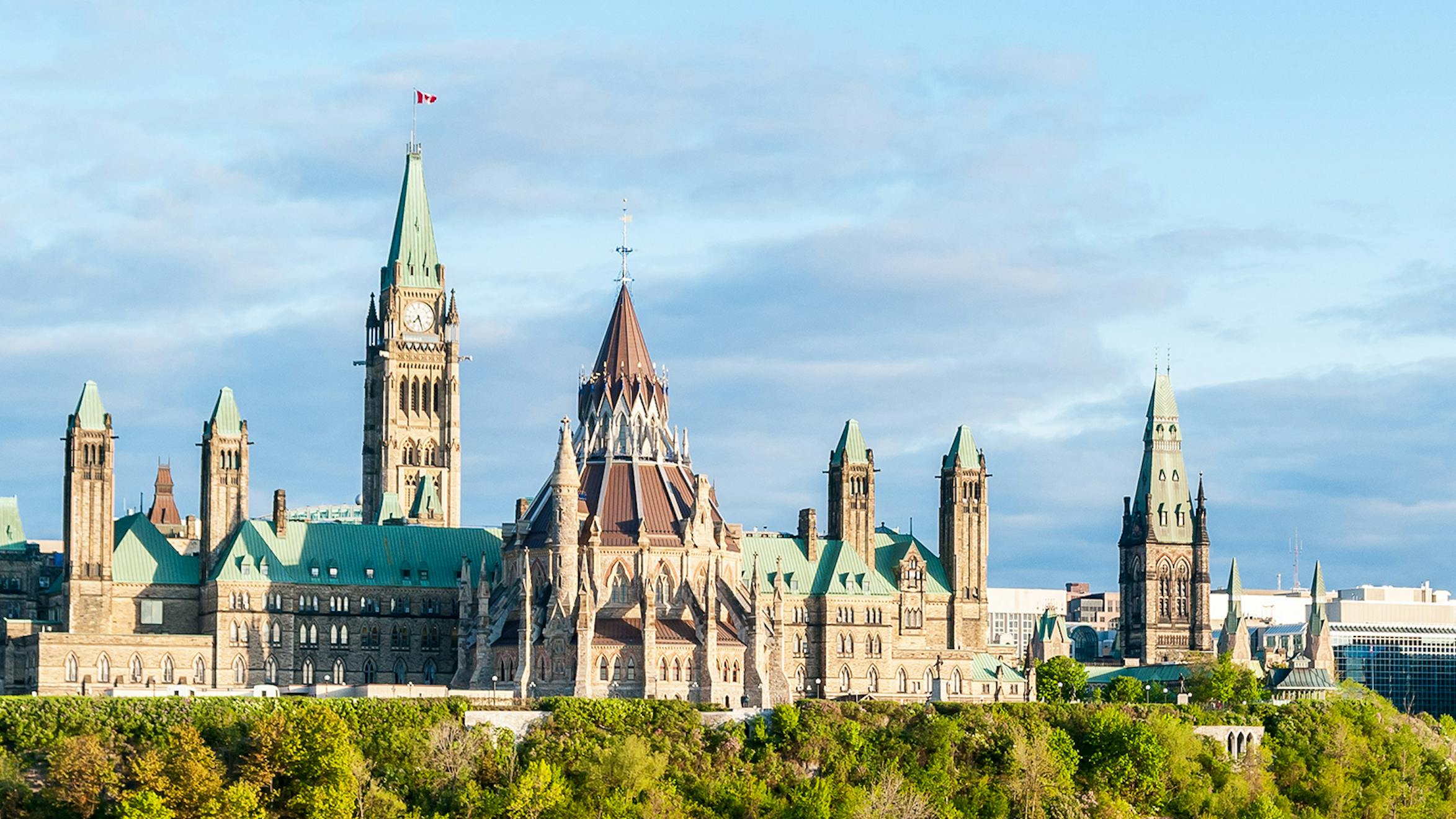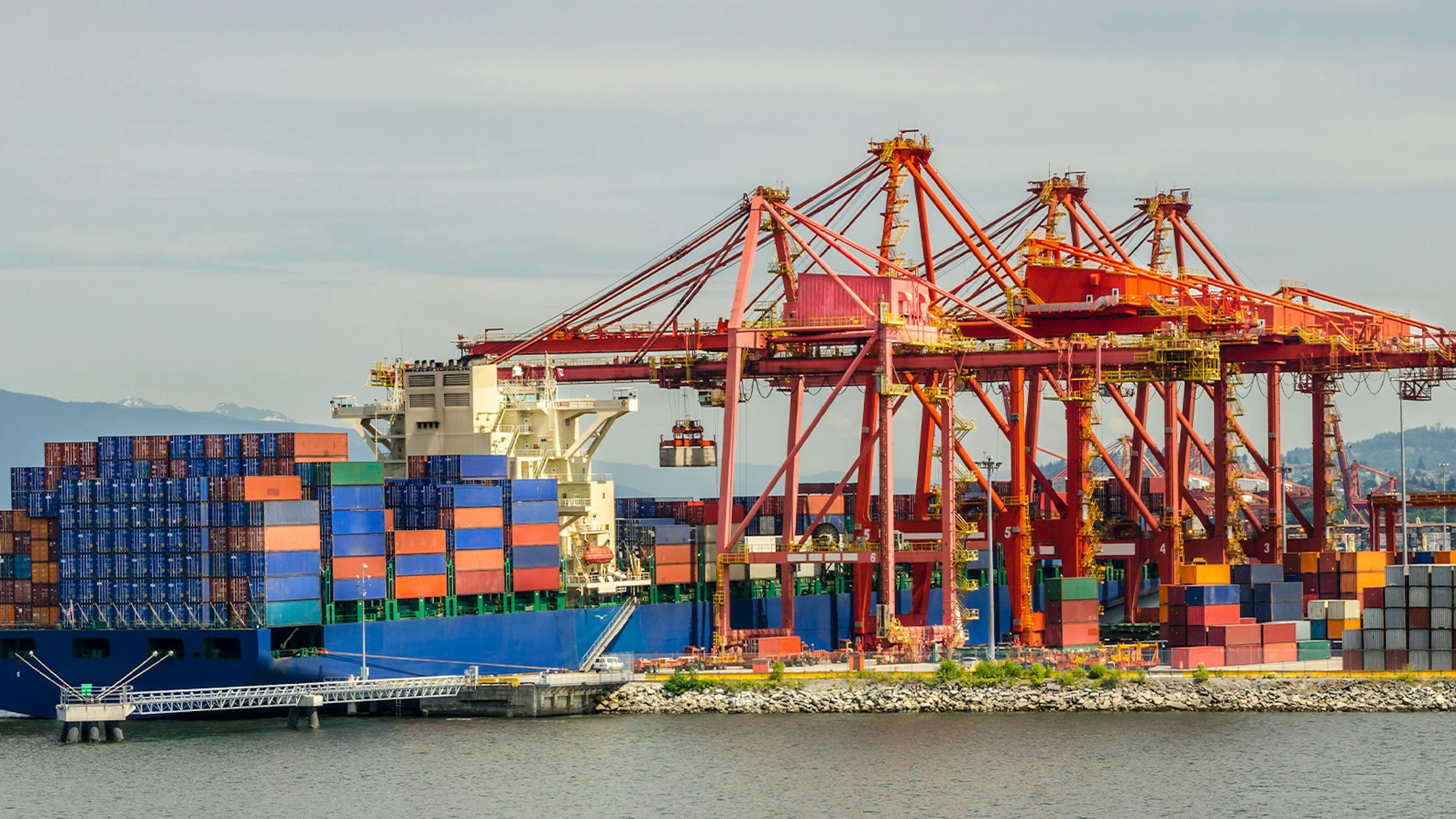From Challenge to Change
2021 Federal Election Platform

The COVID-19 pandemic caused unprecedented challenges for Canadian businesses, communities, and governments. It affected nearly all aspects of our lives, from placing immense pressure on our businesses, to exposing socioeconomic inequalities in our society.
As we start to reopen the economy, sound policy initiatives and action by government are imperative to ensure a successful economic recovery. This requires policies that foster economic growth and a competitive business environment while promoting the health and well-being of citizens.
The Edmonton and Calgary Chambers of Commerce have united to speak with one voice on how we can rebuild stronger and ensure a prosperous future for our country. We have identified and developed priorities and recommendations designed to transform challenges of the past into positive change for the future.

Economic Recovery and Diversification
Throughout the pandemic, government support has been critical to Canadian businesses, allowing them to survive while striving for brighter days ahead. Both the impact of and recovery from the pandemic has been uneven among industries and continues to be felt by many. Some sectors, such as tourism, live events, restaurant, retail, and hospitality have not returned to pre-pandemic revenue levels, while many other sectors continue to struggle with repaying debt and lost talent.
Next steps:
- Continue to consult with businesses about their ongoing challenges and provide appropriate support measures to business in hard-hit sectors. Focus on sectors that have been severely impacted and do not have high-risk tolerance or access to capital, including hospitality and tourism, retail, and non-profit.
- Shift support programs from helping businesses survive to helping businesses grow through job creation, debt relief programs, and tax credits.
- Streamline government support programs to enable businesses to more easily navigate and access available resources. Additionally, when businesses apply for government support, inform them of other resources available to them, including at the provincial level.
- Support new businesses through procurement with targeted support for regions, as well as Indigenous, minority, and women-led businesses.
Inclusive economic growth increases the number of seats at the table for those not typically invited, thereby enriching the labour force and boosting the economy. This entails removing systemic barriers that prevent vulnerable and marginalized individuals from accessing economic opportunities that would allow them to fully participate in the Canadian labour market. This leads to better socioeconomic outcomes such as quality of life, access to healthcare and housing, and educational attainment, ultimately improving the health and vitality of the economy and society overall.
Next steps:
- Invest in affordable and high-quality child care to increase labour force participation and provide a stronger start for our children, which yields considerable economic benefits and creates a larger tax base.
- Create a grant program catered to Indigenous and newcomer children and families to support early learning and child care centers.
- Invest in and incentivize businesses to incorporate social procurement efforts into their organizational strategies.
- Increase support for early childhood educators and training programs to increase the number of people in the profession
Canada has supported research and development for decades through public investment, which have often spurred technological innovation. However, researchers and potential industry partners continue to face challenges when scaling, particularly when commercializing innovations. In collaboration with academia and industry, we urge the development and execution of tangible strategies to strengthen collaboration, inspire investor confidence, and provide pathways for commercialization and widespread adoption of new discoveries and innovations.
Next steps:
- Invest in technology at all stages of the value chain including through incubators, accelerators, grants and novel equity arrangements, including start-ups, commercial demonstration, and commercialization to ensure projects with a strong business case can reach markets.
- Identify and connect businesses with opportunities that support access to capital and allow for direct investment, commercialization, and deployment of Canadian technology into new markets.
- Fund Centers of Excellence for businesses sectors across the country including for clean technology, artificial intelligence, and sports.
- Commit to supporting basic and applied research at post-secondary institutions.
Achieving economic recovery will require support and collaboration from all levels of government. With the worst of the pandemic likely behind us, we should focus on ensuring our public health system and economy can respond to and withstand a similar outbreak in the future. Holistically studying governments’ response to COVID-19 and undertaking a critical review will ensure we are better prepared for future crises.
Next steps:
- Publicly commit to and launch this review by June 2022.
- Conduct a review that focuses on (1) managing public health in a coordinated and collaborative way between all levels of government, (2) methods for timely and streamlined communications and reporting across Canada, and (3) support for businesses during a crisis.
- Update our national pandemic and crisis response strategy according to the findings of this review.

Talent, Skills, and Jobs
The pandemic has accelerated the shift towards digitized and knowledge-based economy. This means virtually all sectors are seeing changes in the types of skills needed from the workforce. With both high unemployment and labour shortages, there is a gap between the skills we have and the skills we need. To attract and retain talent and remain competitive internationally, we need to reskill, upskill, and increase the size of our skilled workforce, in conjunction with a broader economic strategy that ensures Canada maximizes its economic potential.
Next steps:
- Work with provinces, post-secondary institutions, and businesses to expand, improve, and innovate options for training and re-training programs to reduce barriers and help workers adjust more efficiently to the changing economy.
- Increase funding options available to students pursuing post-secondary education, particularly as tuition rates increase, and offer prime interest rates on student loans.
- Work with and incentivize businesses to offer work-integrated learning or micro-credentialing opportunities for employees
- Work with industry to improve the collection and coordination of market information to produce accurate forecasts of evolving skill and competency needs across industries.
- Prioritize nationwide continuous learning opportunities and job-training programs like the Canada-Alberta Job Grant.
As our world becomes increasingly interconnected and Canada aims to attract the brightest talent to our country, we need to develop infrastructure to help attract talent and accommodate growth. Infrastructure development promotes economic prosperity and improves quality of life and overall community well-being.
Next steps:
- Facilitate implementation of 5G networks in urban and rural regions to ensure business competitiveness and educational connectivity.
- Improve and build railway and transit capacity across cities as well as access to rural areas.
- Direct funding towards social infrastructure and affordable housing projects such as mixed income housing developments to support communities.
- Invest in child care infrastructure in partnership with school boards, municipalities and the provincial government. Align planning to ensure enough spaces are available where and when they are needed.

Environment and Climate
For decades, Canada has developed cutting-edge technology focused on reducing emissions. Canada’s energy sector produces oil and natural gas and associated value-added products with a minimal environmental footprint. Alberta’s energy sector is rapidly evolving and has the potential to develop and commercialize technologies in hydrogen, renewable electricity, geothermal, carbon capture, storage and utilization, and energy storage from renewable sources.
As climate change becomes a greater global challenge, Canada and Alberta’s emissions reduction technology will be in demand in both domestic and international markets. We encourage and support long-term direct investment for businesses that accelerates the growth, commercialization, and adoption of Canada’s homegrown decarbonizing technologies. This will create opportunities for Canadian entrepreneurs while reducing emissions and mitigating climate change on a global scale.
Next steps:
- Invest in technology that reduces emissions and increases our competitiveness in the low-carbon economy. Explore clean technology investments across sectors, acknowledging that many industries, including transportation, agriculture, manufacturing, and health, can benefit from emissions reduction innovations.
- Support companies in attracting investment globally and from the U.S., particularly as the U.S. Administration advances its priority on clean technology.
- Simplify existing tax credit programs and establish new incentives that support producers in developing and deploying innovative technologies that reduce emissions.
- Extend the carbon capture tax credit and increase direct investment to support the uptake of carbon capture, storage, and utilization, including for enhanced oil recovery projects, and advance Canada’s position as a leader in this area.
- Develop a new ‘Natural Resource Innovation Supercluster’ to expand innovation and economic activity and support industry’s efforts to move towards a lower-carbon economy.
Canadian businesses can contribute to achieving global emissions reduction targets through innovation, as our new and existing technologies can be used globally to lower emissions. Supporting these efforts will ultimately drive investment into our energy industry as we decarbonize.
Next steps:
- Emphasize Canada’s contribution to carbon capture, storage, and utilization technologies and practices as well as its abundant contribution to carbon sinks.
- Equip all producers and exporters of energy and other products to adapt ESG reporting to align with requirements of global investment.
- Expand and facilitate the creation of clean technology accelerators and incubators across Canada.
- Fund the transition to clean energy by investing in technology at all levels of the innovation ecosystem, including the establishment of a co-investment model.
- Share our ESG and innovation stories domestically and internationally to mitigate concerns about sustainability and emissions.

Finance and Taxation
The increased debt and deficit because of the COVID-19 pandemic response presents a challenge for government budgets for years to come. The Government of Canada should communicate a plan to eliminate the deficit and reduce the debt to protect Canada’s long-term fiscal health. These plans should be developed and communicated with concrete fiscal anchors and enduring performance measures.
Next steps:
- Critically examine all government spending to ensure fiscal responsibility, with a particular focus on finding efficiencies in recurring expenses.
- Focus on key fiscal anchors over the long term and ensure strong balance sheets to avoid creating untenable future tax burdens.
- Strive to increase economic productivity in order to accelerate economic growth.
An independent, non-partisan review is critical to address questions about tax efficiency and fairness outside the political arena. A competitive, simple, and fair tax system will result in savings for businesses, lower barriers for innovation, and attract foreign investment.
Next steps:
- By 2023, conduct a comprehensive, pan-Canadian independent review and deliver a report on Canada’s taxation system in consultation with industry stakeholders and sub-national governments, guided by principles of tax competitiveness, simplicity, fairness, and neutrality.
In September 2020, the Council of the Federation called for (1) eliminating the per capita cap on fiscal stabilization payments; (2) lowering the threshold of reduction of revenue to three per cent from five, and (3) decreasing the threshold for resourced revenues to 40 per cent rather than 50 per cent. The 50 per cent threshold for resource revenue declines disproportionally impacts provinces with high resource revenues relative to their budgets.
Next steps:
- Remove the per capita cap on fiscal stabilization payments.
- Decrease the revenue reduction threshold to three per cent from five per cent.
- Alter the fiscal stabilization formula to make provinces eligible for payments if the decline in resource revenues exceeds 40 per cent and non-resource revenues exceed three per cent.
- Examine ways to improve transparency and understanding about how equalization and all federal transfers are delivered to provinces.

Trade and Market Access
Our Canadian federation is made complex in part by provincial borders, the division of powers under our Constitution and government regulations that vary from province-to-province. Discrepancies between these regulations unnecessarily impedes interprovincial trade flows and labor mobility, increases costs on business operations, reduces efficiency, and limits investment.
Next steps:
- Continue to remove interprovincial trade barriers through the Canadian Free Trade Agreement (CFTA) and accelerate the progress of the Regulatory Reconciliation and Cooperation Table (RCT) to ensure trade barriers within Canada are eliminated.
- Establish a task force to provide direction and strategic support to provinces in dismantling interprovincial trade barriers and pursuing bilateral or multilateral trade agreements.
- Work with industry and provinces to replicate the success of the Red Seal program to facilitate the free movement of all skilled labour across the country by developing consistent and harmonized recognition for professions with specific certifications across provinces.
- Leverage existing agreements such as the New West Partnership Trade Agreement between the provinces of British Columbia, Alberta, Saskatchewan and Manitoba.
Canada is a trading nation and has long been a champion for global free trade and partnerships. We need to build on this success, particularly given the supply chain disruptions Canada has experienced over the past year due to the COVID-19 pandemic. Improving the resiliency of the Canadian supply chain and allowing for greater fluidity of goods and services will be fundamental in supporting Canada’s long-term economic development and strategic trade interests.
Next steps:
- Increase investments in export and trade-enabling infrastructure and create a regulatory environment that encourages the fluid movement of goods across Canada and supports private investment in such infrastructure.
- Establish a national network of trade and utility corridors and rights-of-way across the country including the proposed Northern Infrastructure Corridor initiative, to enable efficient market access from any province or territory to any Canadian coast.
- Promote exports and minimize risk by finding opportunities to access new and diverse markets, particularly for small businesses.
Competitiveness concerns are at the crux of the discourse on taxes and regulations. Opposition to tax and Competitiveness concerns are at the crux of the discourse on taxes and regulations. Opposition to tax and regulatory measures often arises from concerns that they put domestic production at a competitive disadvantage relative to other tax jurisdictions. Reduced competitiveness leads to job losses, which hampers the ability to raise revenue through fair taxation. As Canadians, we must balance the need for regulations to keep markets fair and ensure quality goods and services are provided, against the need to enable businesses to thrive in a competitive environment.
To that end, we recommend a focus on smart regulation, identifying policy overlaps, inconsistencies, burdens, or gaps. We also believe it’s critical to make policy responsive to scientific and technological developments, base regulation on sound research, impact analyses, and scientific evidence, and be explained in accessible language. This will result in the necessary regulations that we need to ensure Canada’s economy thrives and our businesses compete and win on the global stage.
Next steps:
- Implement a ‘layered cost’ economic impact assessment that identifies and values the cost burden created by regulations and policies.
- Ensure promoting competitiveness and economic growth are part of climate and emissions agencies’ regulatory mandates, and that those agencies support and enable the export of innovative technologies.
- Consult with industry to find opportunities to reduce red tape and remove unnecessary or duplicative regulations.
- Coordinate with provincial and territorial governments to shelter industry from political disagreements that cause project delays and uncertainty.
Choosing a Prosperous Future
On September 20th, Canadians will have the power to choose a prosperous future for Canada. From Challenge to Change is a guide to the issues and policies that businesses believe are important for Canadians, not only to recover from the COVID-19 pandemic, but to develop a more robust, stable, and inclusive economy going forward. This election, we encourage all Canadians to read our platform, learn more about the issues, and join the conversation.






